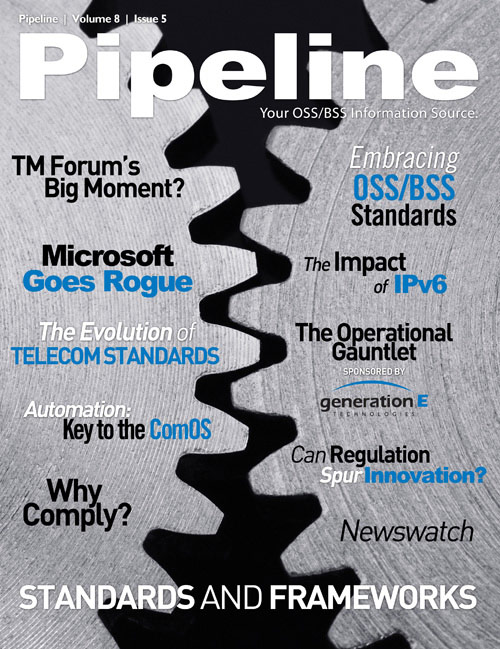By: Cliff Halevi

Once upon a time, prior to 1984, in a world that now seems like a very long time ago, the world of telecom standards was a rather simple matter. Back then, AT&T’s Bell Labs would invent technologies and design the equipment, AT&T’s Western Electric would build the equipment, and AT&T’s Long Lines Department and local Bell Operating Companies would procure and deploy the equipment. A perfect closed system. The system was stable and it worked, but the stability of a monopolistic system also meant that the pace of technology introduction was very slow as the forces of competition and innovation were not yet part of the landscape. The breakup of AT&T in the early 80’s, and the divestment of its local carrier and manufacturing arms meant a sea change in the industry and this change was reflected in the evolution of the standards development organizations that arose to address the needs of a reinvented industry.
One of the first entities to address this need was an organization called Bell Communications Research or Bellcore. Bellcore was more or less the part of the former Bell Labs that supported the Regional Bell Operating Companies (RBOCs, aka Baby Bells) and one of its primary tasks was to create “generic requirements” documents that described the architecture, operation and function of almost every aspect of the telecom network. The idea behind these GRs was to provide the industry with a library of requirements that were sufficiently detailed to enable new companies to build equipment that would interoperate with each other. The result was an explosion of creativity and entrepreneurship that saw the creation of thousands of new entrants who started to make “GR conformant” equipment as part of an ever-growing ecosystem of vendors. Almost overnight, an industry that was reliant on a few large manufacturers became a dynamic competitive arena with carriers now having the freedom to engage with a multiplicity of vendors.

 While Bellcore continued to generate and update the “generic requirements”, the rapidly growing telecom industry saw the need for the development of even more open (and possibly less expensive) industry-wide standards development process. Part of this impetus was the desire to broaden the base of companies which supported the development of standards since most of the costs were being borne by the larger companies, but this goal was tempered with the desire of the major carriers and vendors to play a dominant role in any subsequent standards development organization (SDO). In North America, the Telecommunications Industry Association (TIA) was the vendors’ primary venue for industry standards, and ATIS was created, in part, as an SDO more attuned to carriers’ interests. Bellcore, being the developer of “generic requirements” which were de facto industry standards, and being jointly owned by the largest carriers (i.e., the Baby Bells), was thus in prime position (because of their expertise and access to Baby Bell funding), to provide the expertise, resources and coordination support for much of the standards work going on in North American SDOs in the late 80’s and through the 90’s, as work proceeded in areas such as SONET, ISDN, AIN, CCS/SS7, Wireless, Network Management, Numbering & Routing, Performance, DSL, etc.
While Bellcore continued to generate and update the “generic requirements”, the rapidly growing telecom industry saw the need for the development of even more open (and possibly less expensive) industry-wide standards development process. Part of this impetus was the desire to broaden the base of companies which supported the development of standards since most of the costs were being borne by the larger companies, but this goal was tempered with the desire of the major carriers and vendors to play a dominant role in any subsequent standards development organization (SDO). In North America, the Telecommunications Industry Association (TIA) was the vendors’ primary venue for industry standards, and ATIS was created, in part, as an SDO more attuned to carriers’ interests. Bellcore, being the developer of “generic requirements” which were de facto industry standards, and being jointly owned by the largest carriers (i.e., the Baby Bells), was thus in prime position (because of their expertise and access to Baby Bell funding), to provide the expertise, resources and coordination support for much of the standards work going on in North American SDOs in the late 80’s and through the 90’s, as work proceeded in areas such as SONET, ISDN, AIN, CCS/SS7, Wireless, Network Management, Numbering & Routing, Performance, DSL, etc.
In those days, the primary standards arena was domestic, with North American standards developed in ATIS and TIA, and then brought to the ITU-T in Geneva as the starting point for “international versions” of these standards.










